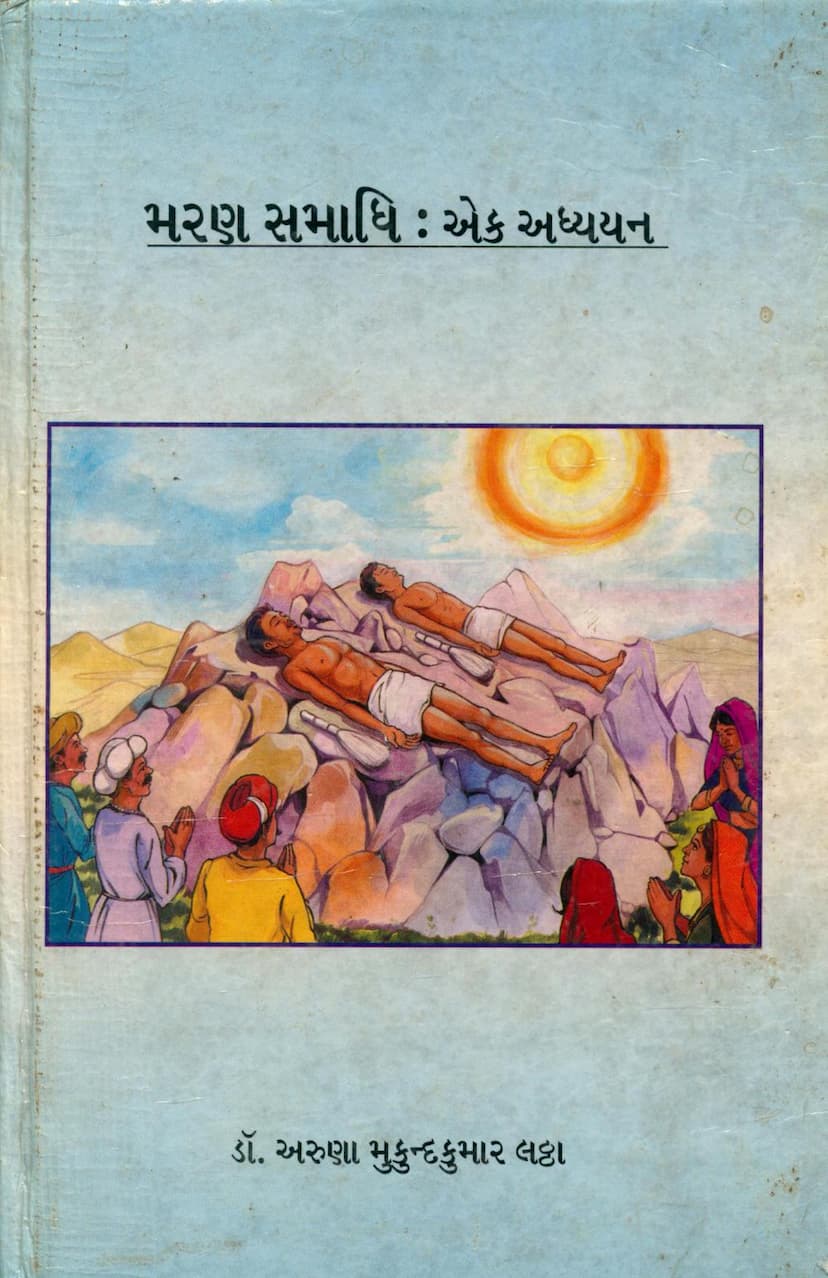Maran Samadhi Ek Adhyayan
Added to library: September 2, 2025

Summary
Here's a comprehensive summary of the Jain text "Maran Samadhi Ek Adhyayan" by Dr. Aruna Mukund Lattha, based on the provided pages:
Book Title: Maran Samadhi Ek Adhyayan (Death Meditation: A Study) Author: Dr. Aruna Mukund Lattha Publisher: Mahavir Jain Vidyalaya, Mumbai
Overview:
"Maran Samadhi Ek Adhyayan" is a scholarly study of the Jain Agama text "Marana-Samadhi Prakirnaka." The book delves deeply into the Jain concept of maran samadhi, which translates to "death meditation" or achieving a state of equanimity and peaceful contemplation at the time of death. The author, Dr. Aruna Mukund Lattha, was awarded a Ph.D. by Gujarat University for her thesis on this topic.
Key Themes and Content:
The book, particularly the introductory sections and the detailed chapter on Prakirnaka literature, highlights the following:
-
Significance of Maran Samadhi in Jainism:
- Jainism emphasizes not only living a virtuous life but also dying with equanimity (samadhi) and peace.
- A death without samadhi is seen as a cause for repeated cycles of birth and death, while death with samadhi leads to purity and liberation.
- The text positions maran samadhi as a crucial element for spiritual liberation (moksha) and the ultimate goal of a Jain spiritual seeker.
-
The "Marana-Samadhi Prakirnaka" Text:
- The book focuses on "Marana-Samadhi Prakirnaka," a collection of teachings related to death and dying, which is itself a part of the larger "Prakirnaka" literature within the Jain Agamas.
- Prakirnaka literature is characterized by its miscellaneous nature, covering various topics, and is accessible to both monks and lay followers (shravakas).
- "Marana-Samadhi Prakirnaka" is a significant work within this category, specifically dedicated to the topic of achieving a state of peace and detachment at the time of death.
- The original "Marana-Samadhi Prakirnaka" text is believed to be an anonymous work compiled after the 11th century, drawing from approximately eight existing texts on samadhi-maran.
-
Jain Philosophy on Death:
- The text counters the common human fear of death, presenting it as a natural, inevitable, and even potentially auspicious event within the Jain framework.
- It contrasts "Bala Maran" (ignorance-driven death) with "Pandit Maran" (wise or contemplative death), highlighting the latter as the path to liberation.
- The book extensively discusses the preparations and practices required to achieve pandit maran, including:
- Alochana (Confession/Analysis): The process of confessing one's faults and wrongdoings before a spiritual guide and seeking absolution.
- Pratyakhyana (Renunciation/Vow): The act of renouncing specific actions, desires, or even the body itself.
- Tapasya (Austerities): Rigorous practices undertaken to purify the soul and burn karma.
- The Twelve Bhavanas (Reflections): Meditative contemplations on impermanence, suffering, the nature of the soul, etc., that lead to detachment.
- Parishaha (Endurance of Hardships): The practice of equanimously facing and enduring difficulties and adversities without complaint.
- Samadhi (Equanimity/Meditation): The ultimate goal of maintaining a state of mental peace and concentration, especially during the final moments.
-
Prakirnaka Literature in General:
- Chapter 1.1 provides a detailed overview of Prakirnaka literature, including its definition, classification, authors, time periods, languages (primarily Jain Maharashtri Prakrit), styles (often poetic, using gatha meter), and diverse subject matter (astrology, physiognomy, cosmology, ethics, rituals, etc.).
- It highlights the importance of Prakirnakas as they bridge the gap between the more complex Angas and Upangas and are accessible to lay followers.
- The text enumerates various Prakirnaka texts, detailing their approximate content, and notes the challenges in definitively establishing their exact number and authorship due to scholarly differences and the nature of ancient compilations. "Marana-Samadhi" is listed among these significant Prakirnakas.
-
Comparative Study:
- The book aims to provide a comparative study of the concept of maran samadhi by referencing other Jain Prakirnaka texts like "Chatuh-sharan," "Maha-pratyakhyana," "Atura-pratyakhyana," "Bhakta-parigjna," and "Samstaraka."
- It also touches upon the differing views on death and the afterlife in other religious traditions (mentioning Zoroastrianism, Judaism, Christianity, Islam, Hinduism, Buddhism, and Charvaka) to contextualize the Jain perspective.
-
Author's Journey and Contribution:
- The preface and acknowledgments reveal Dr. Lattha's personal journey into this profound subject. Her dedication to learning Prakrit and delving into ancient Jain texts is emphasized, particularly by her family and mentors.
- The publication is praised as a significant contribution to Jain literature, making complex philosophical concepts accessible in a clear and understandable manner.
-
Structure and Methodology:
- The book is structured into chapters that systematically explore the subject, starting with the general concept of Prakirnaka literature, then detailing other related Prakirnakas, and finally focusing on "Marana-Samadhi" itself, its content, historical context, and comparative analysis.
- The author's rigorous academic approach is evident in her research, comparative analysis, and reliance on original texts and scholarly interpretations.
In essence, "Maran Samadhi Ek Adhyayan" is a comprehensive and well-researched exploration of a vital aspect of Jain spiritual practice – the art of dying with equanimity and awareness, leading towards ultimate liberation. It provides not only the philosophical underpinnings but also the practical guidance and illustrative examples found within the Jain tradition.